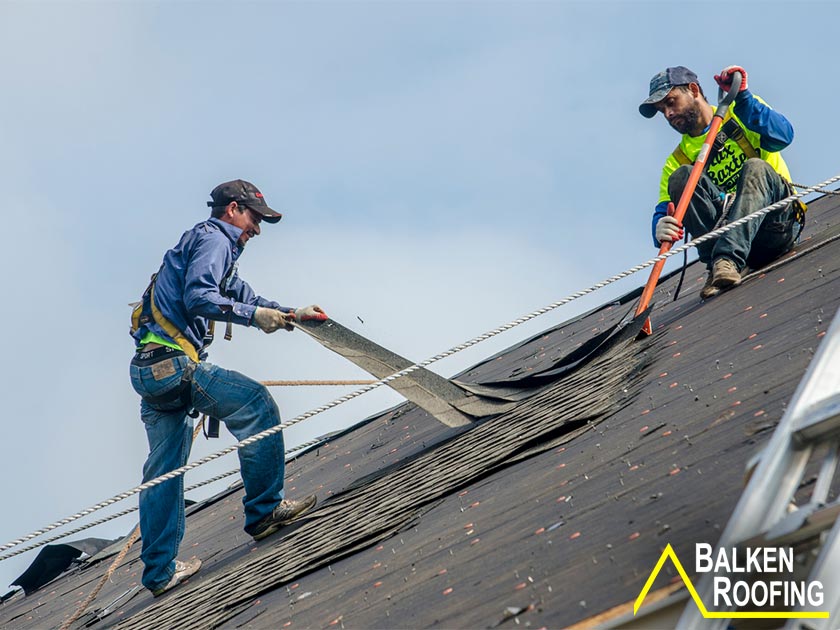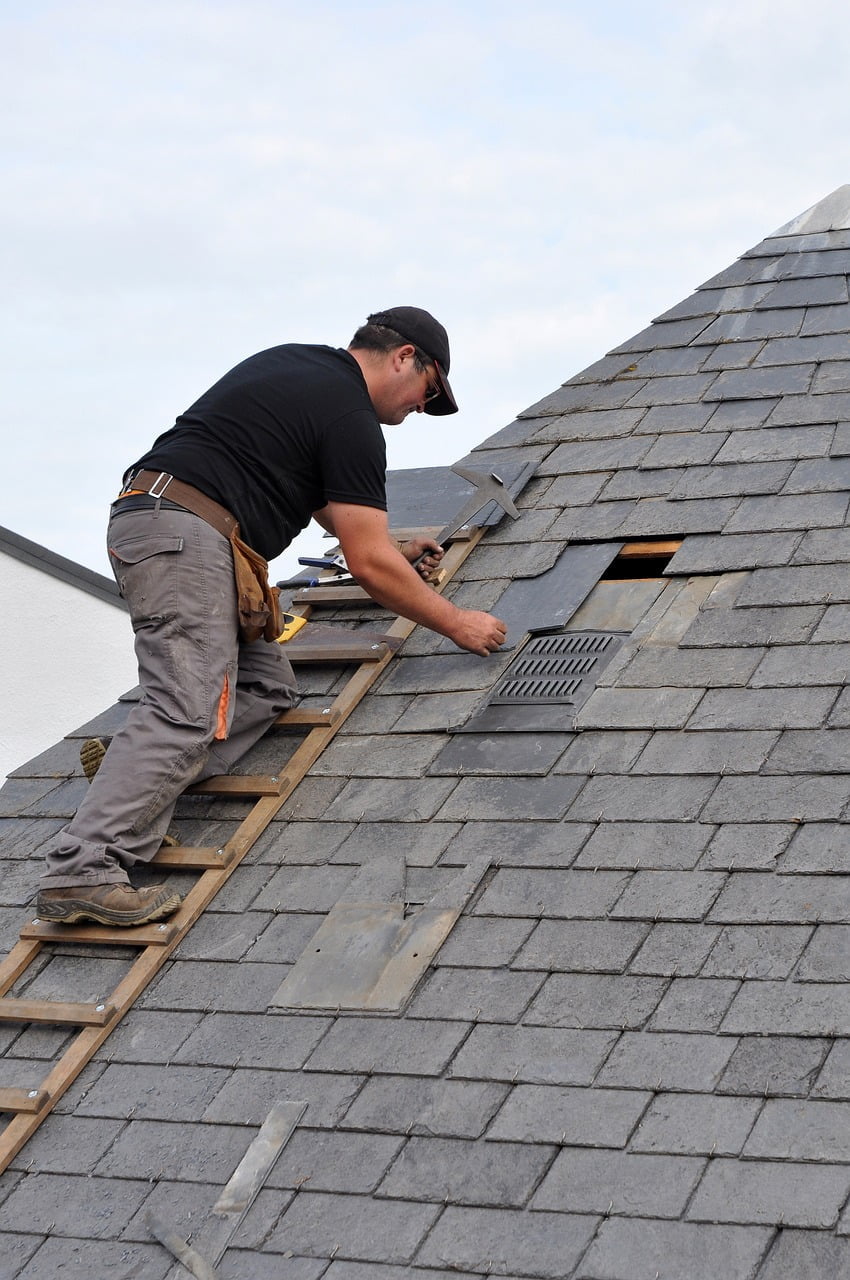Seasonal Roof Fixing List: Prepare Your Roofing System for Every Weather
By following a seasonal roofing fixing list, you can remain in advance of potential concerns. Allow's check out just how correct upkeep can protect your home and extend your roof covering's life-span.
Inspecting Your Roof Covering for Winter Months Preparedness
As winter methods, it's important to inspect your roofing to verify it can stand up to rough weather. Start by examining for missing or damaged tiles; also a tiny issue can lead to considerable leaks when snow and ice collect. Next, examine the blinking around vents and smokeshafts-- this area is typically at risk to water invasion.
Don't forget to seek indicators of sagging or irregular surface areas, as these could show architectural issues. Additionally, validate your rain gutters are clear; blocked seamless gutters can bring about ice dams that damage your roofing system.
 roof repair
roof repair
Spring Cleaning: Clearing Up Particles and Monitoring for Damages
When winter season's hold launches, it's time to take on springtime cleaning on your roofing by clearing away particles and checking for any kind of damages. Start by examining your roof covering for dropped branches, leaves, and various other debris that can trap dampness and trigger rot. A tidy roof covering advertises better drain and prevents mold development.
Following, grab a sturdy ladder and meticulously examine tiles for splits or missing out on pieces. Take note of areas around vents and chimneys, as these places are vulnerable to leaks. Do not forget to analyze your rain gutters, ensuring they're devoid of blockages that might bring about water pooling.
While you're up there, try to find indicators of wear, like corrosion on steel blinking or loosened seals around skylights. Addressing them now can conserve you from costly repairs later if you detect any issues. A little spring cleaning goes a long means in maintaining your roof covering's honesty.
Summertime Heat: Analyzing Your Roof for Heat-Related Issues
As summer warmth magnifies, it's necessary to examine your roofing for heat-related problems. best roof replacement Gainesville Check for any kind of roof shingles damage, look for signs of warm buckling, and assess just how well your roofing aerates. Taking these steps now can protect against larger troubles later on.
Evaluate for Shingle Damages
 roof repair
roof repair
Look For Warmth Buckling
Heat fastening is a typical problem that can arise during the scorching summer months, and it's necessary to check for it on your roof covering. Begin by inspecting your roofing system aesthetically; look for any unequal surfaces or lifted edges. If you detect any kind of indications of heat buckling, it's important to address them immediately to prevent further damage.
Examine Roofing Ventilation Performance
After looking for warmth fastening, it's crucial to evaluate your roofing's ventilation efficiency. Appropriate air flow assists manage temperature level and wetness, protecting against damage from excessive warmth. Begin by checking your vents; see to it they're not obstructed by particles or insulation. Seek indicators of poor air flow, like warm build-up in your attic or deformed roofing materials. You might likewise desire to examine if your soffit vents and ridge vents interact efficiently. If your home really feels stuffy and overheated, consider upgrading to extra reliable air flow systems, like powered attic room followers or added soffit vents. Keep in mind, preserving great air flow not only lengthens your roof covering's life yet additionally improves your home's total energy performance, assuring convenience during those warm summer months.
Rainy Period Preparedness: Guaranteeing Proper Drainage
As the rainy season techniques, you need to guarantee your roof covering's drainage system is prepared to take care of hefty rainstorms. Begin by checking your downspouts and seamless gutters, and ensure they're free from particles. Don't fail to remember to examine the blinking and seals to protect against leaks and water damage.
Check Downspouts and rain gutters
Throughout the wet season, it is crucial to frequently evaluate your rain gutters and downspouts to ensure proper drain. Beginning by looking for any noticeable particles, like branches or leaves, that could block the flow of water. Ensure the gutters are safely affixed and cost-free from drooping, as this can catch water and bring about leakages. Next, examine the downspouts for clogs or damages; a blocked downspout can cause water to overflow, potentially damaging your roofing and foundation. Confirm that downspouts direct water away from your home's structure. If you spot any type of problems, address them quickly to stop pricey fixings. When heavy rainfalls struck., a little maintenance now can save you huge frustrations later on.
Tidy Roofing Surface Debris
Use a roof covering rake or mop to delicately eliminate debris, being careful not to damage the tiles. After cleaning, check your roofing after hefty rainfalls to spot any possible concerns early. Maintaining your roof covering clear of debris is crucial for preventing pricey fixings down the line.
Check Flashing and Seals
After clearing your roof of debris, take a closer take a look at the blinking and seals around vents, skylights, and smokeshafts. These locations are crucial for preventing leaks during the stormy period. Check the flashing for any type of indications of rust, splits, or voids. If you observe any type of damages, it is very important to repair or replace it promptly. Next off, examine the seals; they need to be tight and undamaged. Try to find any type of peeling or worn-out locations that may enable water to permeate in. Consider resealing them with a premium roof covering sealer if you locate any type of endangered seals. Ensuring these parts remain in good condition will certainly assist keep proper drain and secure your home from water damages throughout heavy rainfall.
Checking and Maintaining Roofing System Seals and Flashing
While it could seem easy to ignore, inspecting and maintaining roofing system seals and flashing is vital for protecting against leaks and water damage. Begin by checking the seals around vents, skylights, and chimneys. Search for any kind of fractures, gaps, or indicators of wear. If you spot any concerns, it's best to reseal them with ideal roof sealer to ensure a tight fit.
Next, analyze the flashing, which routes water away from vital areas. Check for rust, loose sections, or curved edges. If you discover any broken blinking, change it or safeguard it appropriately to preserve its honesty. Remember, even a small problem can cause substantial problems in the future.
Lastly, don't neglect to cleanse off any debris that may block the seals or flashing. Maintaining these parts in great shape will help secure your roofing system versus the components and prolong its life expectancy.
Rain Gutter Upkeep: Keeping Water Streaming Smoothly
Since your gutters play an essential duty in guiding rain away from your home, regular upkeep is essential for stopping water damages and structure concerns. A blocked rain gutter can lead to water overflow, which might damage your roofing system and house siding.
Next, examine for any indications of rust, holes, or drooping areas. Repair or change the afflicted components without delay if you observe any type of damage. Verify downspouts are guiding water at least 6 feet far from your foundation. If essential., think about including expansions.
Finally, check that your gutters are properly sloped, ideally a quarter inch for every single 10 feet. This incline guarantees water flows smoothly toward the downspouts. Routine upkeep will keep your gutters operating effectively and safeguard your home from expensive repairs.
Setting Up Professional Assessments for Comprehensive Treatment
On a regular basis scheduling professional examinations is necessary for maintaining your roof's integrity. This timing allows you to resolve any kind of damages triggered by winter months weather or summer season tornados.
Throughout inspections, professionals will assess shingles, blinking, and ventilation, making certain everything's in leading form. They'll additionally examine for indications of wear, leaks, or mold and mildew, which you may overlook. Scheduling these inspections not just expands your roofing's life-span however additionally gives you satisfaction.
If you're uncertain about the problem of your roofing, do not think twice to call a specialist. Buying these exams now can save you a great deal later. Prioritize your roofing's health and wellness, and you'll be well-prepared for whatever weather condition comes your way.
Frequently Asked Inquiries
How Typically Should I Examine My Roof Covering Throughout the Year?
You must examine your roofing at the very least two times a year, ideally in spring and loss. After serious weather occasions, look for damages too. Normal assessments assist you capture concerns early and save money on repairs.
What Indications Indicate I Need a Roof Covering Substitute Rather Than Repair Service?
 roof repair
roof repair
Can I Perform Roofing System Repair Works Myself, or Should I Hire a Professional?
You can execute small roof repairs on your own if you fit with heights and standard tools, yet hiring a specialist guarantees safety and security and correct work. Don't risk damages; it might be worth the financial investment for comfort.
What Are the Best Materials for Roofing System Fixes in Different Environments?
For various environments, you'll desire products like asphalt tiles for modest locations, metal roofing for extremes, and clay ceramic tiles for hot areas. Always think about local climate patterns to assure your roof stands up to the components efficiently.
Exactly How Do Roofing Warranties Impact Seasonal Maintenance Responsibilities?
Roof covering guarantees usually specify upkeep duties, so you'll need to evaluate the terms. If you do not preserve your roofing as required, you could nullify the guarantee, leaving you in charge of pricey fixings.
Seasonal Roofing Fixing Checklist: Prepare Your Roof Covering for Every Climate
Once winter's grasp launches, it's time to take on springtime cleansing on your roofing by getting rid of away particles and checking for any damages. Inspect for any kind of tile damages, look for indications of warmth fastening, and review how well your roof covering aerates. If you identify any problems, take into consideration getting in touch with a professional for repair work to keep your roof covering in top form and safeguard your home from possible water damages.
While it may appear easy to neglect, preserving and inspecting roof covering seals and flashing is vital for avoiding leakages and water damages.